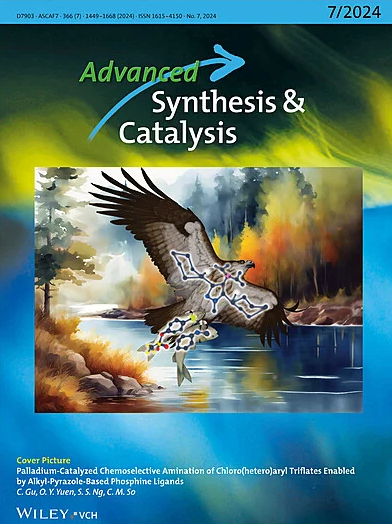N-Containing Carbon Materials in Metal-Free and Non-Noble Metal Liquid Phase Heterogenous Catalysis
IF 4
2区 化学
Q2 CHEMISTRY, APPLIED
引用次数: 0
Abstract
Non-noble metal and metal-free catalysts can be of great benefit for the development of economically and environmentally sustainable chemical processes. In this context, N-containing carbon materials serve both as effective catalyst supports and standalone catalysts, offering enhanced stability by mitigating deactivation mechanisms such as metal leaching and sintering. The review is primarily organized by non-noble metal, systematically covering each case in which their use as an active phase on N-containing carbon materials has been reported in literature. In parallel, cross-cutting aspects are examined throughout, including the role of different N-functionalities (graphitic, pyridinic, pyrrolic, and pyridinic-N-oxide) in active-phase stabilization mechanisms. Structurally diverse carbon materials—such as amorphous carbon, carbon nanotubes, carbon spheres, carbon nanofibers, and graphene—are also considered. Furthermore, the influence of preparation methods, including template-free, hard-templating and soft-templating techniques, is analyzed with emphasis on their role in tuning textural properties. Despite significant progress, uncertainties remain regarding the precise stabilization mechanisms and the relative contributions of different N-functionalities to catalytic activity and surface acid–base properties. Addressing these knowledge gaps will be essential for optimization of N-containing carbon materials and to drive the transition towards greener and more sustainable catalytic technologies.

含氮碳材料在无金属和非贵金属液相多相催化中的应用
非贵金属和无金属催化剂对经济上和环境上可持续的化工过程的发展具有重要的意义。在这种情况下,含n碳材料既可以作为有效的催化剂载体,也可以作为独立的催化剂,通过减轻金属浸出和烧结等失活机制,提高了稳定性。这篇综述主要是由非贵金属组织的,系统地涵盖了它们在含氮碳材料上作为活性相使用的每一种情况。同时,横切方面的研究贯穿始终,包括不同的n官能团(石墨、吡啶、吡咯烷和吡啶- n -氧化物)在活性相稳定机制中的作用。结构多样的碳材料-如无定形碳,碳纳米管,碳球,碳纳米纤维,石墨烯-也被考虑。此外,分析了制备方法的影响,包括无模板、硬模板和软模板技术,重点分析了它们在调整纹理性能方面的作用。尽管取得了重大进展,但关于精确的稳定机制以及不同n官能团对催化活性和表面酸碱性质的相对贡献仍然存在不确定性。解决这些知识差距对于优化含氮碳材料以及推动向更环保、更可持续的催化技术过渡至关重要。
本文章由计算机程序翻译,如有差异,请以英文原文为准。
求助全文
约1分钟内获得全文
求助全文
来源期刊

Advanced Synthesis & Catalysis
化学-应用化学
CiteScore
9.40
自引率
7.40%
发文量
447
审稿时长
1.8 months
期刊介绍:
Advanced Synthesis & Catalysis (ASC) is the leading primary journal in organic, organometallic, and applied chemistry.
The high impact of ASC can be attributed to the unique focus of the journal, which publishes exciting new results from academic and industrial labs on efficient, practical, and environmentally friendly organic synthesis. While homogeneous, heterogeneous, organic, and enzyme catalysis are key technologies to achieve green synthesis, significant contributions to the same goal by synthesis design, reaction techniques, flow chemistry, and continuous processing, multiphase catalysis, green solvents, catalyst immobilization, and recycling, separation science, and process development are also featured in ASC. The Aims and Scope can be found in the Notice to Authors or on the first page of the table of contents in every issue.
 求助内容:
求助内容: 应助结果提醒方式:
应助结果提醒方式:


